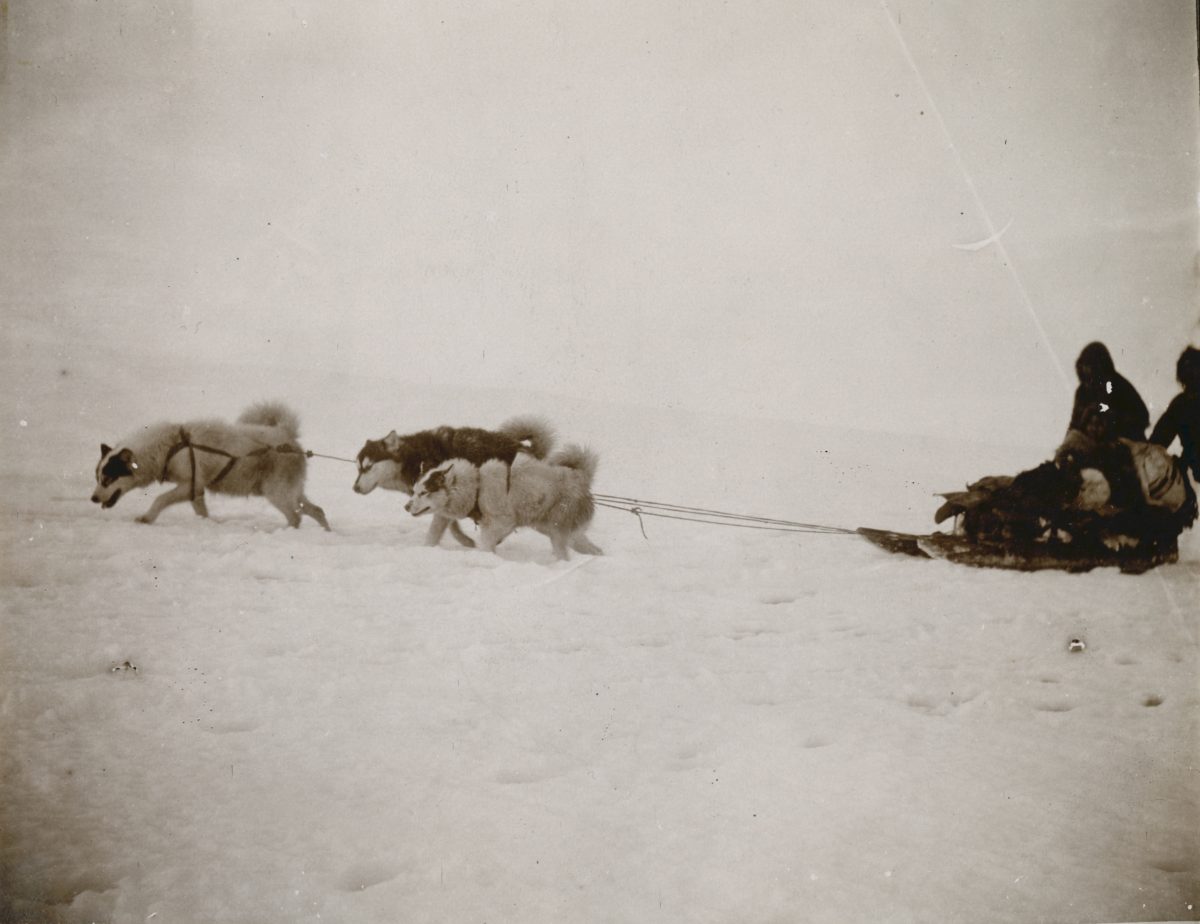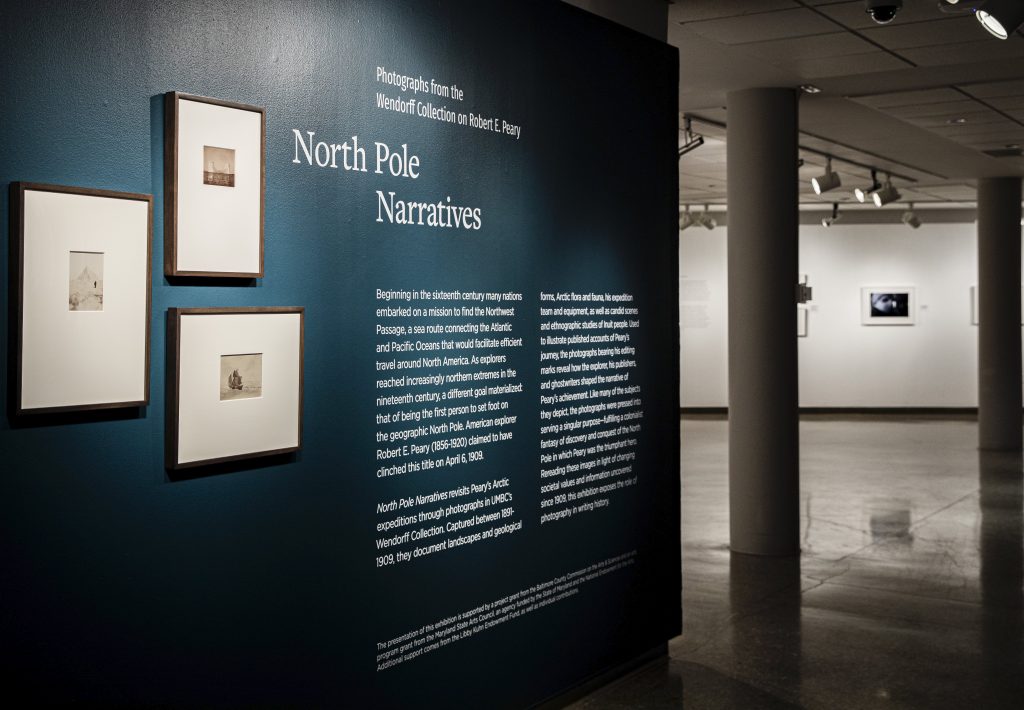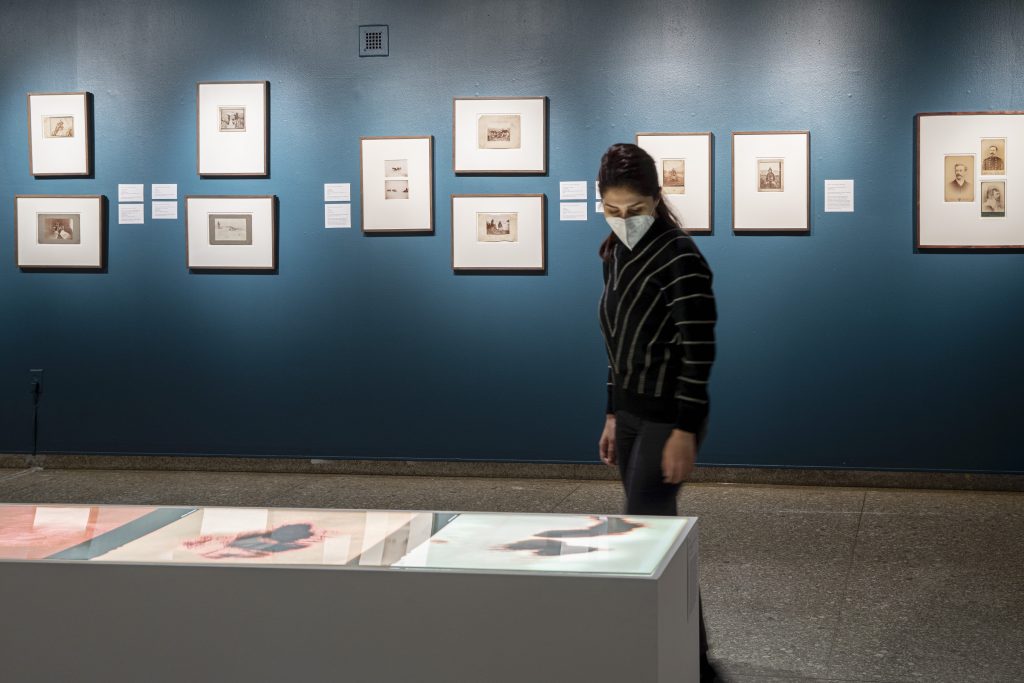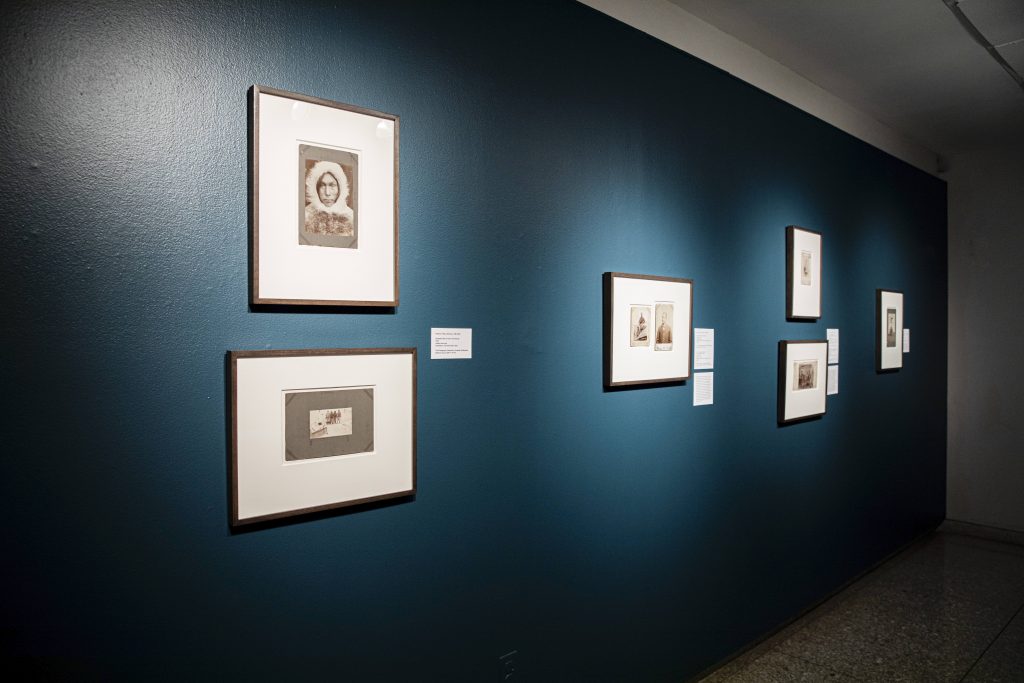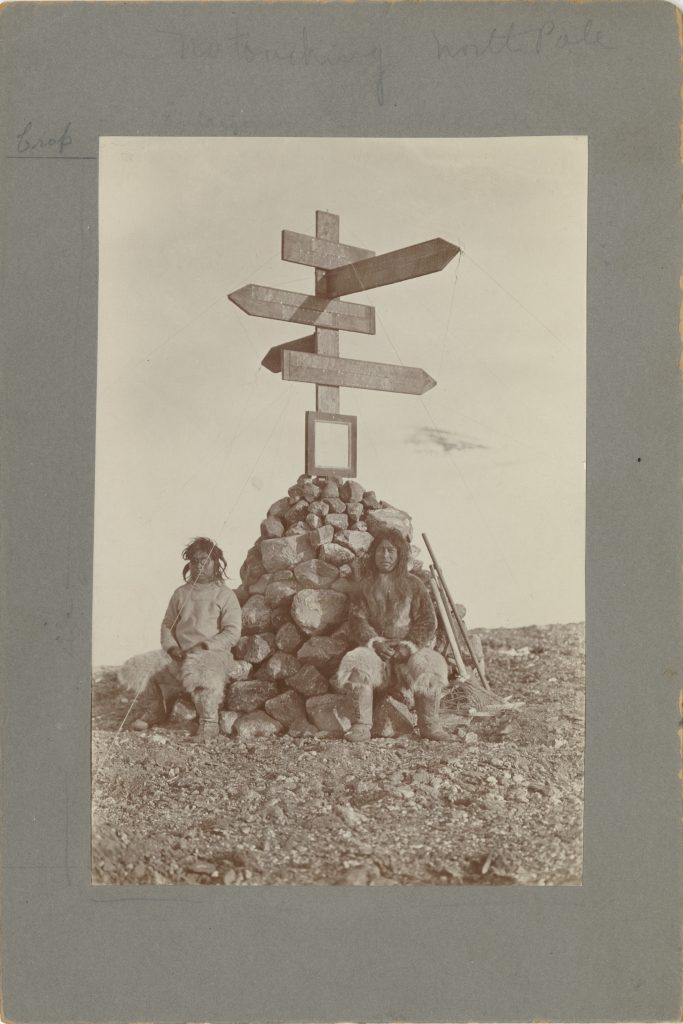
Beginning in the sixteenth century many nations embarked on a mission to find the Northwest Passage, a sea route connecting the Atlantic and Pacific Oceans that would facilitate efficient travel around North America. As explorers reached increasingly northern extremes in the nineteenth century, a different goal materialized: that of being the first person to set foot on the geographic North Pole. American explorer Robert E. Peary (1856-1920) claimed to have clinched this title on April 6, 1909. North Pole Narratives revisits Peary’s Arctic expeditions through photographs in UMBC’s Wendorff Collection.
Robert E. Peary. Permanent monument erected at Cape Columbia to mark the point of departure and return of the North Pole sledge party. ca. 1909. Gelatin silver print. The Photography Collections of the University of Maryland, Baltimore County (P78-118-087).
Cover Photo: Robert E. Peary. Sledging. ca. 1886-1909. Collodion print. The Photography Collections of the University of Maryland, Baltimore County (P78-118-126).
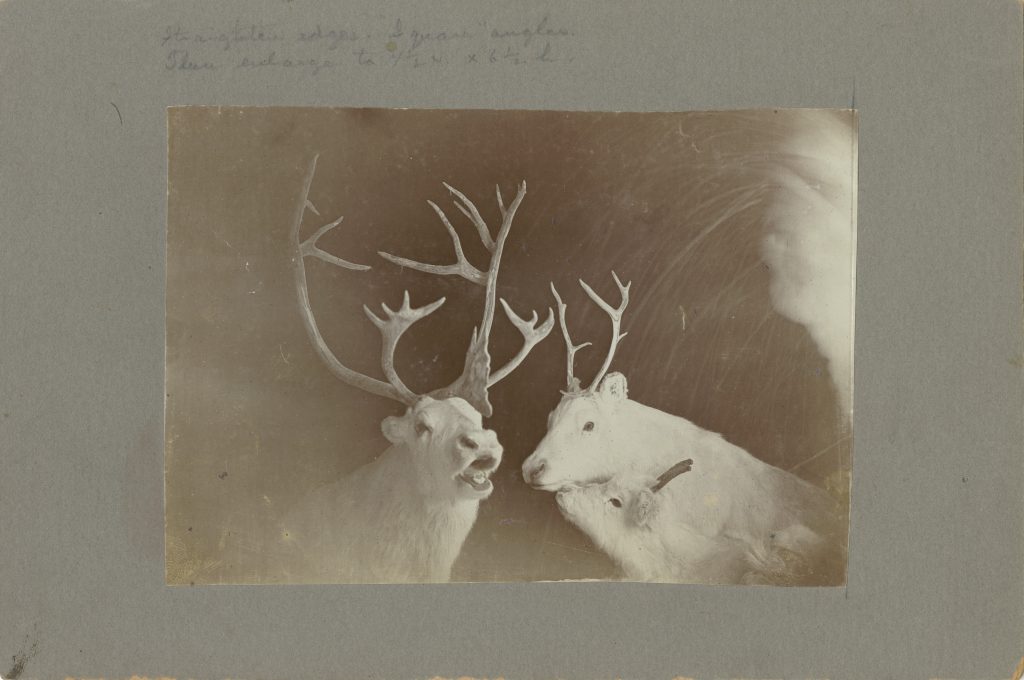
Captured between 1891-1909, these photographs document landscapes and geological forms, Arctic flora and fauna, Peary’s expedition team and equipment, as well as candid scenes and ethnographic studies of Inuit people. Used to illustrate published accounts of Peary’s journey, the photographs bearing his editing marks reveal how the explorer, his publishers, and ghostwriters shaped the narrative of Peary’s achievement. Like many subjects they depict, the photographs were pressed into serving a singular purpose- fulfilling a colonialist fantasy of discovery and conquest of the North Pole in which Peary was the triumphant hero.
The success of Peary’s mission was due to his adoption of Inuit technologies, methods, and equipment, and to the Inughuit (Polar Inuit of Greenland) who traveled with his team to the North Pole.
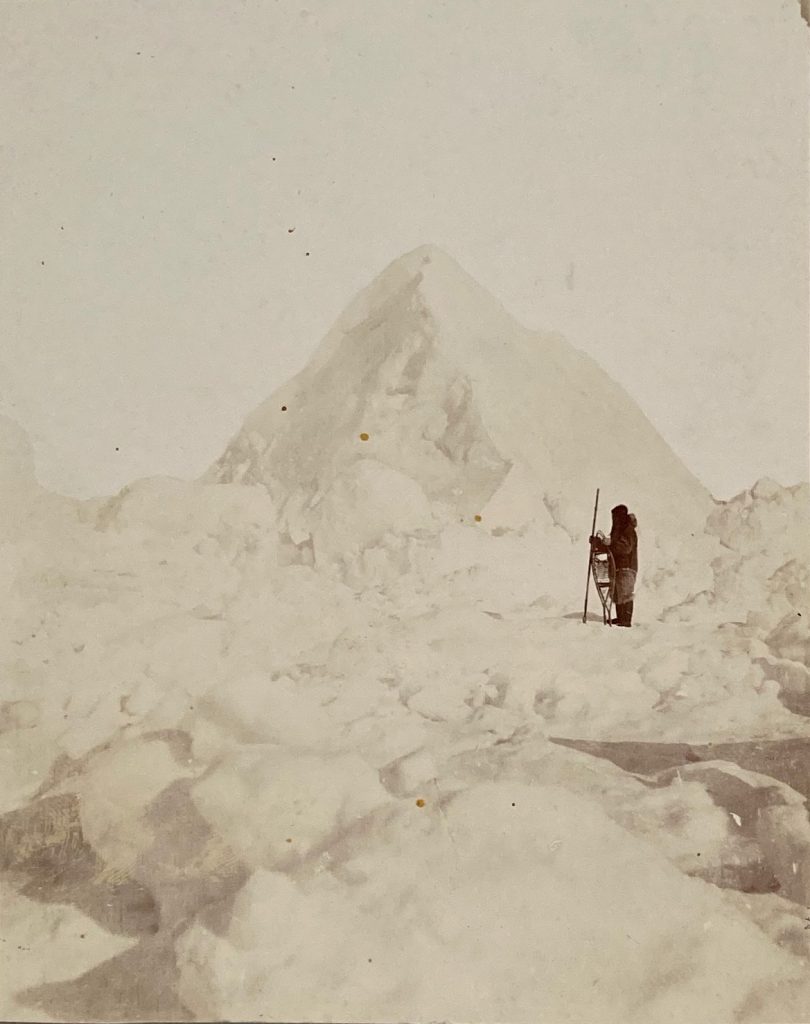

Rereading these images in light of changing societal values and information uncovered since 1909, this exhibition exposes the role of photography in writing history.
Robert E. Peary. Henson with Raven and Blue Fox. ca. 1886-1897. Gelatin silver print. The Photography Collections of the University of Maryland, Baltimore County (P78-118-127).
A note on the captions:
This exhibition considers the construction of narratives through photographs, specifically those used to illustrate Northward over the ‘Great Ice’ (1898) and The North Pole (1910), two published accounts of Robert E. Peary’s Arctic exploration. The captions that accompany the photographs in these books were written by Peary, his ghostwriters—including novelist and poet Elsa Barker and journalist A. E. Thomas—and his publishers. As a result, some of the language presented here reflects the culture and context in which these historical documents were created, and may be racist, harmful, or offensive.
We are aware of the importance of language and its effect on users and viewers of our materials and those represented within them. We have chosen to follow the Library & Archives of Canada’s “Writing titles for descriptions of Indigenous-related archival materials” guidance. When the caption or title is problematic, we have supplied a title that respects Indigenous peoples’ rights and cultures. The supplied title will be enclosed in square brackets. The original caption (derived from Peary’s publications or annotations on the prints) will follow in italics. We have also supplied titles in brackets for photographs that do not have original captions.
The presentation of this exhibition is supported by a project grant from the Baltimore County Commission on the Arts & Sciences and an arts program grant from the Maryland State Arts Council, an agency funded by the State of Maryland and the National Endowment for the Arts. Additional support comes from the Libby Kuhn Endowment Fund, as well as individual contributions.
Installation views by Research Graphics at UMBC

